- Home
- Simon Winchester
Outposts Page 13
Outposts Read online
Page 13
Spain managed to hang on to Gibraltar for only two and a half centuries, and her invigilation was neglectful, if not downright malign. The place went to ruin: nothing of note was built, it was peopled by convicts whose sentences were suspended while they lived there, it was a hotbed of religious intolerance (the Jews were all thrown out in 1492), it degenerated into a dreary wasteland of wrecked buildings and wharves, where undisciplined soldiers waited for a Moorish attack that never came—and for pay that never came either—and watched without understanding the steadily increasing number of ships from other nations that sailed on trading missions between the Atlantic and the Mediterranean.
The British had their Imperial eyes upon it from early on. Cromwell lusted after it as fortress and strategic base. ‘Gibraltar, if possessed and made tenable by us,’ he said, ‘would be an advantage to our trade and an annoyance to the Spaniard.’
And yet when finally it did fall to British guns, and to the naval cannonade of Admiral Sir George Rooke, it did so not precisely on Britain’s behalf, but rather on behalf of the Hapsburg Pretender to the Spanish Throne, Charles, the Archduke of Austria. And to add further complication to the story, Rooke was aided in his conquest by the Archduke’s agent, the Prince of Hesse-Darmstadt, who is still remembered with affection by Ulster Protestants for having been wounded at the Battle of the Boyne by the same ball that hurt King William.
The cannonade must have been terrifying, and overwhelming to the Spaniards, who could muster only eighty trained soldiers, 470 peasant militiamen, 1,000 civilian territorials and twenty working heavy guns. Rooke’s forces, which he deployed over the first weekend of August 1704, included seventy-one warships, 26,000 artillerymen, 9,000 infantrymen and 4,000 cannon. His attack, which began at dawn on Sunday, 4th August, needed only a few hours; he poured 15,000 balls on to the tiny city, clustered above the docks and on the comparatively gentle slopes of the Rock’s western flanks. Barely a building stood the onslaught—one reason why so little of historical importance remains in the colony today.
Rooke’s men landed at daybreak, and by midnight the last of the Spaniards emerged from their foxholes. The Spanish Governor, Diego Salina, surrendered and marched the remains of his garrison and almost the entire population of 6,000 civilians northwards, and to La Linea and San Roque. Gibraltar was now, in fact if not in law, British. In fact the Prince of Hesse, installed as first Governor, first raised the Spanish flag, on behalf of his Pretender’s claim; and even when Rooke tore this down, and protested that the peninsula was British, a second Governor was installed who was most definitely Spanish—a General Ramos. Then Archduke Charles himself was brought to Gibraltar in 1705 and formally declared King of Spain, which must have seemed very odd, given that there were no Spaniards there at all except Ramos, and a population of what were called ‘shacombe filthies, raggamuffings and scrovies’ from Rooke’s seventy-one warships.
Total British dominion began in 1707, when Colonel Roger Elliot took office as Governor; and finally, on 13th July 1713, the document that confirmed it all—or didn’t confirm a thing, depending upon your nationality and persuasion—was signed by Queen Anne and King Philip, and a host of other European monarchs besides, in the small town of Utrecht, on the banks of the Crooked Rhine, in central Holland.
The Treaty of Utrecht, which brought to a formal end the War of the Spanish Succession, spread Europe’s Imperial tentacles across the world. It dealt with Newfoundland, Nova Scotia, Hudson’s Bay and the island of St Kitt’s (with France handing them over to Britain); it recognised Frederick of Prussia’s claim to Neuchatel; it said that the Duke of Savoy could rule Sicily and Nice, permitted Portugal suzerainty over the banks of the Amazon, and cut back French territory in Guiana. Spain gave to England the exclusive right to supply her colonies with Negro slaves; and it gave her Minorca, and, in the famous Article X, it gave her Gibraltar, too.
The first paragraph is crucial, because it is said to be ambiguous. Interpretations of it by scholars, lawyers and historians, together with ever more subtle interpretations of other paragraphs of the massively formal document, have led to the perpetuation of arguments between Britain and Spain over just who actually owns the peninsula—and not over just who ought, by rights and tradition, to own it. The claims have led to not a little violence, but more often to acts and decisions of sheer lunacy. One recent example is said to have befallen a Spanish painter who was applying green gloss to the gates on his side of the frontier. He dropped the brush, and it fell through the gate and into Gibraltar. According to the tale, which I suspect to be apocryphal, he was told that to retrieve it he would have to travel via Tangier, just as I had done. It is difficult to imagine that he supposed the brush worth the time and money, or that he didn’t just search out a convenient coathanger, and pluck the brush back to safety.
The supposedly ambiguous first paragraph of Article X reads as follows:
The catholic King does hereby, for himself, his heirs and successors, yield to the Crown of Great Britain, the full and entire propriety of the town and castle of Gibraltar, together with the port, fortifications and forts thereunto belonging; and he gives up the said propriety to be held and enjoyed absolutely with all manner of right forever, without any impediment or exception whatsoever.
The lawyers argue that, watertight though the paragraph may seem, the use of the word ‘propriety’ is ambiguous, and does not necessarily constitute complete title to Gibraltar. The Treaty is wheeled out on almost every public dispute over the matter: it has been suggested, for instance, that by placing soldiers on the peninsula Britain was violating one of the Treaty’s cardinal provisions. Since there is no other reason for Britain being in Gibraltar—the civilians of Gibraltar have always been thought of by the colonists as second-class, tiresome types who get under the feet of the soldiers and the matelots—this particular grumble was, certainly in the heyday of Empire, met with a weary and sardonic shrug of the Imperial shoulders.
The Treaty came after the Spaniards had tried to prise the British off the Rock by laying siege; they failed then, and failed twice more, once in the spring of 1727, and again—for three years and seven months—beginning on 11th July 1779. This latter, the Great Siege, was from the Spanish point of view a monumental waste of time and money.
In one six-week period in 1781, for example, the Spanish artillerymen hurled 56,000 shot and 20,000 shell into the fortress, but managed to kill only seventy men. The following year they held a contest for the best way of subduing the British on the Rock, and came up with the superb folly of the floating batteries, great stripped-down ships roofed with nets and hides and crammed with guns of the heaviest gauge. Dozens of them were hauled out into the bay, and began firing a wild cannonade at the British forces on the west flank from a range of half a mile. The British were serenely undismayed, and fired down at the batteries with red-hot cannonballs, which set the juggernauts on fire, sinking them and drowning 1,500 crew.
When it was all over someone calculated that one ball in 2,000 killed a Briton, and scarcely an excavation made in Gibraltar today fails to come up with at least one of the tens of thousands that failed to connect. The Spanish—and actually the besiegers were a mongrel army, with three Walloon battalions, one from Switzerland, some from Flanders, Ireland and Savoy—never tried again. Diplomacy, tempered by occasional excursions into mild forms of violence, has dominated the argument ever since.
The Great Siege has left many legacies—not least the indomitable spirit, or obtuse cussedness, of the Gibraltarian, and his professed loathing for the Spaniard. ‘There are two kinds of apes on the Rock,’ remarked a taxi driver, a Mr Ferrary, as his old Ford Prefect laboured up the hill to the place where he promised I would be able to see the famous monkeys. ‘Yes, two kinds—the animals, and the Spaniards.’
It left more practical memorials as well. One emerged from the simple difficulty the British artillerymen experienced in defending their fortress. What would happen, one of them mused, if a cannon perched high
on the cliff were fired horizontally, its ball going out into space? Ballistics was evidently then an imperfect discipline, since the conventional assumption had it that the ball would proceed outwards in a straight line until the force pushing it diminished to nothing, whence it would plummet, suddenly, like a stone. No truck with parabolas in those days: a cannonball would be like a waterfall, going straight out and straight down, its course impossible to aim, its consequences impossible to predict.
Naïve—and plain wrong—though such wisdom was, it set the gunners’ brains to work. One of their number, a Lieutenant Koehler, found the answer: the gun should be pointed downwards so that it could be aimed at the enemy below, and a clever device (which Koehler patented) would stop the ball rolling out before the powder charge went off. Moreover, a cunning recoil system had to be devised so that the gun wouldn’t rupture itself every time it was fired in this highly unnatural position. Koehler came up with the recoil mechanism too, and the two devices became standard equipment on British heavy guns for generations to come.
To get the guns into position—specifically, up to a projection known as the Knotch, from where a blind spot on the Mediterranean side could be covered—required still more imagination; this was provided by another of the Rock’s favourite sons, a Sergeant-Major Ince of the Military Artificers. He, and fifty stone-cutters, masons, miners and lime-burners, drove a tunnel behind the Rock’s northern face, along which the cannon could, it was thought, be trundled. On their way they punched a number of fresh-air vents through the face itself, and then made the discovery that they could poke the cannon through these portholes, and command huge fields of fire while remaining more or less invulnerable. And so the frustrated Spanish Army—including the Walloons (and Maltese cavalrymen, who occasionally charged towards the British lines)—watched while great black holes opened in the white cliffs, gun barrels were thrust out, and withering fusillades of shot flew down at them.
The tunnels—galleries, as they came to be called—were the first of a vast subterranean network. Today there are more than thirty miles of them, some carrying roads, thirteen specially designed as cavernous reservoirs to hold drinking water, some protected by steel blast doors and containing secret communications equipment and, by reliable though unconfirmed accounts, atomic bombs, and some put to even stranger uses. An entire Northern Irish village was built in one very big tunnel; it had a Roman Catholic church (St Malachy’s), a pub (the Hope and Anchor) and a fish-and-chip shop (Tom’s). British soldiers, some kitted out as IRA men, others as Irish civilians and still others in their usual battledress, would make war on each other, practising for Ballymurphy and the Bogside. It made a fine irony, I thought, for the interior of one British colony to be used to learn how to subdue the post-Imperial wrangling in what some regard as, strictly speaking, another.
By 1784, British rule in Gibraltar was unquestioned, and the Rock had become, in Britain and across much of the world, a monument to tenacity, grace under pressure and bulldoggishness in general. Before the siege there had been many plans to dispose of the colony, or to use it as a diplomatic bargaining chip. Lord Stanhope had offered Gibraltar back to Spain if Madrid would relinquish her claims in Italy; the French had offered Martinique and Guadeloupe in the Caribbean if Spain could be given back Gibraltar; and there were other trading schemes advanced besides. But after 1784, after the failure of the Great Siege, it was clear the British public would have none of it. ‘Safe as the Rock of Gibraltar’ was the phrase invented at the time, and variants of that most thunderous Imperial assertion have determined British policy towards the Rock ever since.
It was a squalid possession in those early days. The garrison was largely composed of ne’er-do-wells, drunkards and smugglers; the civil population, ignored and despised by the military establishment, was Genoese, Maltese, Moorish, Portuguese, British and—despite a specific provision of the Treaty of Utrecht barring them from settlement—Jewish. (Spain points to that provision, coupled with a ban on Moors living in the colony as well, as yet another indication that her cession of the peninsula was temporary and conditional.) And while the Genoese and the Maltese attended to the more mundane duties of urban life—though the Genoese fished, grew vegetables on the neutral ground between La Linea and the Rock’s north face, and dealt in tobacco, as they still do today—the Sephardic Jews attended to the essentials of Empire—they lent money, opened trading houses and warehouses, had no overweening pride to prevent them from the vulgar business of trade, and thus managed swiftly to dominate the colony’s commerce. The result was their early prominence among the successful—if not social—élite of the colony, and their continuing power today. ‘Gibraltar is full of Jews,’ people will tell you as you step on to the plane at Gatwick; well, it is not, but occasionally it feels as though it might be, or might once have been. Spain rather likes to note how the British have pointedly ignored the Treaty of Utrecht’s ban on Jews and Arabs by occasionally, and mischievously, reminding the world of the name of the present, and seemingly indomitable Prime Minister of Gibraltar. It is Sir Joshua Hassan.
The social élite—the Governor and his entourage, the senior soldiery and admiralty, the British nabobs—generally kept aloof from the noisome and mongrel crew down in the town. To them, Gibraltar town was dirty and smelly, ill-constructed and primitive, cursed with disease and vagabondage, and they rarely ventured from their elegant mansions up on the hillside, or from behind their barrack walls. Except, that is, in matters of sport: the élite and the more skilled of the native Gibraltarians played polo, and the British and the Spanish, whatever their politically inspired loathing for each other, rode to hounds.
The Calpe Hunt, one of the Empire’s oldest and oddest, still exists, or at least is revived from time to time, and gentlemen in hunting pink can still be seen driving through the boundary gates for a rendezvous with their hounds. But no one is quite sure how it all began: some say, a little improbably, that a foxhound couple was actually kept on the Rock, and that foxes were to be found on the scrub on the slopes of Mount Misery and Middle Hill, scurrying among the apes.
Others say the first hounds were kept in San Roque under the mastership of one Reverend Mackareth, and that more hounds from the Duke of Wellington’s pack, stationed near his great estates around Cadiz, were brought down in 1817, given to the interested officers of the 29th Regiment, and named after Gibraltar’s classical title. By the end of the nineteenth century Colonel Gilbard was able to say that the hunt was ‘the’ great institution on the Rock, ‘and a well-conducted establishment at the North Front gives accommodation to the huntsmen, hounds and their attendants’. The hunting was no longer confined to the peninsula’s slopes, but had extended to the hills and meadows of neighbouring Andalucia, with the local landowners gladly allowing the Englishmen to ride their ‘little coarse-bred Spanish horses’ in pursuit of the exceptionally cunning native foxes.
The colonel saw his sport as an antidote to diplomatic disharmony. Were the Spaniards themselves to follow the pack ‘this would wonderfully smooth the difficulties which occasionally crop up and threaten to spoil sport, and the members of the hunt would gladly welcome the Spanish officers, gentry and farmers joining in the sport in friendly rivalry’. Which is exactly what happened; and grandees of both English and Andalucian parentage rode together and once went over to Tangier ‘where a wolf gave an excellent run of over forty minutes and a distance of nine miles’.
The garrison’s élite may have rid the Rock of its foxes, and there may well now be fewer hares and rabbits on the upper slopes; but the Rock apes are still there, and in abundance. As well they might be: Spanish legend holds that when the apes go, then the British will surely follow, and British Governments and Imperial representatives have striven mightily—and seriously—to ensure that the animals remain healthy and numerous to this day. The serenity and fecundity of the apes is of great moment to both the Convent and, as a symbol, to Downing Street.
The little gang of Rock apes—Macacus inuus�
��are the only monkeys to be found in Europe. Theories about their having swum across from Africa, or having arrived drenched, clinging to Moroccan logs, have long been discounted; zoologists believe these are the relict clan of a great tribe of Macaques which once frolicked in Germany and France, and came as far north as Aylesbury. The last Ice Age forced them steadily southwards: Gibraltar was their final peninsular refuge, the closest they ever would come to their native home. Had the blizzards and hailstorms swept through Spain they might have been driven into the Straits, and drowned.
But here they still sit, begging for food on the Monkey’s Alameda, swinging from wall to tree to tourist shoulder, spitting, lunging, hawking, puking and displaying their unpleasant and oddly tail-less backsides to the daily busloads of the curious. They are truly loathsome creatures, in a state of permanent distemper, ogrous packages of green and grey fur, all teeth, stale fruit and urine. How little these true barbarians know of the solicitous tendresse to which they are subject, or of the colonial telegrams that have passed to and from the Gibraltar cable station, attesting to their contentment, or their decline.

 The Surgeon of Crowthorne
The Surgeon of Crowthorne Korea: A Walk Through the Land of Miracles
Korea: A Walk Through the Land of Miracles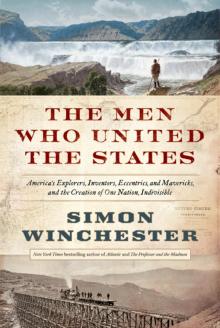 The Men Who United the States: America's Explorers
The Men Who United the States: America's Explorers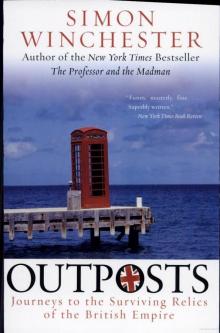 Outposts: Journeys to the Surviving Relics of the British Empire
Outposts: Journeys to the Surviving Relics of the British Empire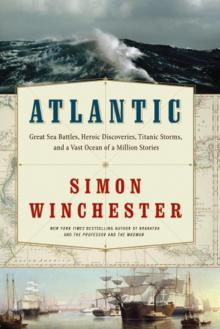 Atlantic: Great Sea Battles, Heroic Discoveries, Titanic Storms
Atlantic: Great Sea Battles, Heroic Discoveries, Titanic Storms The Professor and the Madman: A Tale of Murder, Insanity
The Professor and the Madman: A Tale of Murder, Insanity A Crack in the Edge of the World
A Crack in the Edge of the World The Perfectionists: How Precision Engineers Created the Modern World
The Perfectionists: How Precision Engineers Created the Modern World The Man Who Loved China: The Fantastic Story of the Eccentric Scientist
The Man Who Loved China: The Fantastic Story of the Eccentric Scientist The River at the Center of the World: A Journey Up the Yangtze
The River at the Center of the World: A Journey Up the Yangtze The Fracture Zone: My Return to the Balkans
The Fracture Zone: My Return to the Balkans The Map That Changed the World
The Map That Changed the World Krakatoa: The Day the World Exploded
Krakatoa: The Day the World Exploded The Man Who Loved China
The Man Who Loved China The River at the Centre of the World
The River at the Centre of the World Bomb, Book and Compass
Bomb, Book and Compass The Perfectionists
The Perfectionists The Meaning of Everything
The Meaning of Everything Exactly
Exactly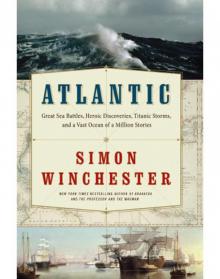 Atlantic
Atlantic Korea
Korea The Fracture Zone
The Fracture Zone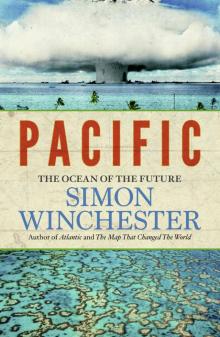 Pacific
Pacific Krakatoa
Krakatoa The Professor and the Madman
The Professor and the Madman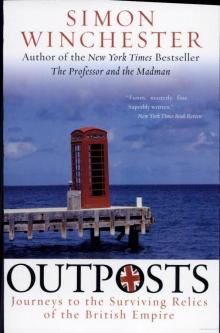 Outposts
Outposts